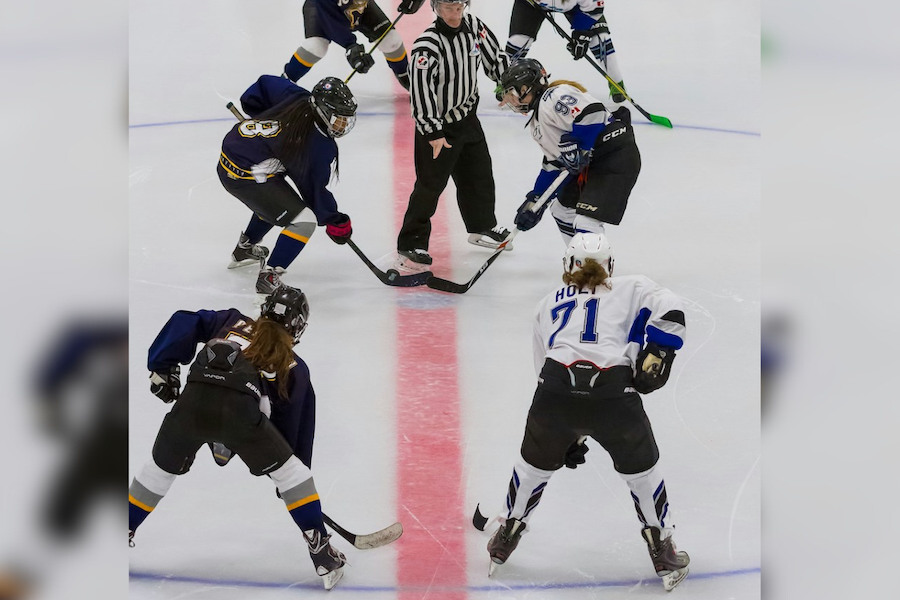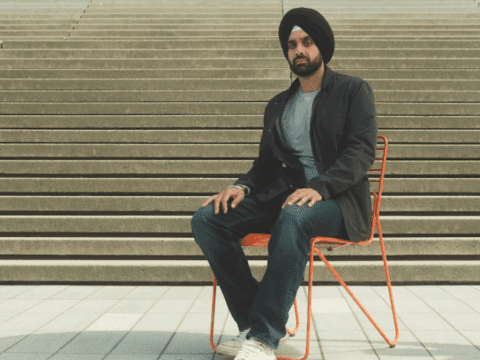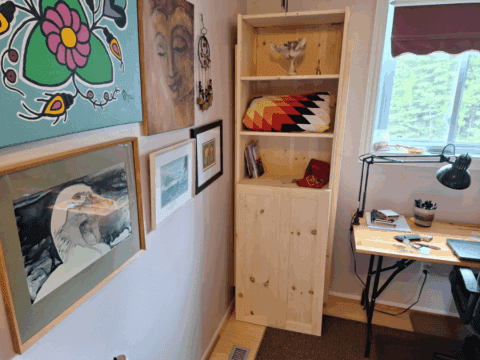When the minimum salary for Professional Women’s Hockey League (PWHL) players was released this fall, it raised quite a few eyebrows. “Professional athletes surviving on $35,000? In Toronto?”
After all, the living wage for that city is considered $45,591 by the Ontario Living Wage Network, and in Ottawa, it is $39,949. In Quebec, the income for a Montrealer living alone rose nine percent to $32,525 between 2022 and 2023.
You may unsubscribe from any of our newsletters at any time.
There is, however, more than meets the eye when it comes to these pay checks. The most obvious is that it is in American dollars, meaning that the minimum salary is over $47,000 CAD while the maximum salary is over $107,500 CAD (from $80,000 USD).
But that’s not all: players are eligible for a $1500 USD – approximately $2000 CAD – housing stipend each month during the season. The Collective Bargaining Agreement (CBA) states that teams must also provide players with meals pre- and post-training and games. Players also get almost $110 CAD per diem to cover meals on road trips.
The PWHL also provides players with medical, dental and vision insurance for which they do not have to cover the premiums or deductibles. They can choose to add dependents (at their own expense). The league will also be covering the cost of at least $55,000 USD in life insurance, long-term disability insurance, and workers’ compensation benefits. Pregnant players will continue to receive their salary and benefits until the season ends, while any parent is entitled to eight paid weeks off.
Long-time women’s hockey fans know that the PWHL isn’t the first league to pay its players. In its final season, the Premier Hockey Federation (PHF) had a salary cap of $750,000, with the highest announced salary being $80,000 and the league minimum being $13,500 – reportedly low to allow flexibility for part-time players. The league also reportedly provided “full healthcare benefits” that season.
Before being bought out, the PHF announced they were doubling their salary cap to $1.5 million USD for 2023-24.
The key difference between the leagues, however, is the broader working conditions for athletes. In the PHF, few team support roles were full-time positions, which included many coaches pulling double duty with another team. In February 2023, CBC reported that the league was still planning schedules to accommodate other jobs despite the raised salary cap.
In contrast, PWHL teams are on ice nearly every day of the week, with practices being held during regular working hours. Toronto’s general manager Gina Kingsbury explained that her team spends about 75 to 90 minutes on-ice, with the rest of the CBA-mandated five-hour block dedicated to off-ice training and development sessions.
“We always go straight to the salaries and how much money the athletes are making,” said Kinsbury, who previously played in both the CWHL and the WWHL as well as on Team Canada. “But it’s all the little things that the league has permitted us to build around the athletes that have made this feel much different than any other professional league we’ve been a part of.”
Indeed, the team-behind-the-team being built in each city is deep, not just in quantity but also in specialization. Coaching includes the core head and assistant coaches, but also ones dedicated to goaltending, video, strength/conditioning, and/or analytics. According to the PWHL’s director of communications Paul Krotz, budgets are consistent across the league, but teams decide salaries and composition at their own discretion.
For instance, Toronto’s front office and entire coaching staff work full-time; Kinsbury said only goalie coach Brad Kirkwood is working part-time. In Montreal, front office staff working on the hockey side are all full-time, as are the core coaching staff. Their skills and goalie coaches are listed as consultants; strength and conditioning coach Emmanuelle Blais is also the co-owner and a trainer at Le Vestiaire Gym.
Both Montreal and Toronto have an athletic therapist working full-time, while the latter also has a physiotherapist on staff full-time and – according to Kingsbury – a part-time massage therapist. Other teams have also variably hired trainers, athletic and physiotherapists, mental performance coaches, and more directly or through partnerships with local medical clinics, as staff or consultants.
“When there are attempts to develop women’s professional sports now, we’re consistently trying to hold them to the standard of men’s professional sports now,” said Michele Donnelly, an assistant professor of sports management at Brock University.
Indeed, next to the NHL – where the lowest-paid player makes $750,000 USD – the salary and benefits of PWHL players probably seem like small potatoes.
More on Broadview:
- Why we must call out microaggressions
- More young girls are fearing for their safety as they engage in activism
- Hockey has a racism problem. These Canadians are trying to fix it.
A fair comparison, however, would be the NHL 106 years ago. The league had emerged from the suspension of the National Hockey Association and competed for the Stanley Cup with the Pacific Coast Hockey Association (later the Western Hockey League).
Rosters were eleven men deep, and the captain of the Montreal Canadiens made $1,300 (or about $2,500 CAD today). The first game saw an estimated 700 spectators, including disabled Great War veterans who got in for free, and there wouldn’t be a broadcast for just over five years.
“There was investment without revenue, there were seasons where teams and leagues operated at a loss and that was seen as a necessary part of their growth,” explained Donnelly. Given time to grow the NHL became a business that made approximately $5.2 billion in revenues in the 2021-22 season.
“There hasn’t been the same allowance for women’s sports,” Donnelly added.
“They’ll consider it an investment when they’re putting money into men’s sports, and traditionally, putting any money into women’s sports has always been perceived as a risk,” explained Katie Lebel, an assistant professor of business and economics at the University of Guelph. “From a business standpoint, that’s a big difference. When you’re investing in something, you don’t expect it to succeed immediately.”
Moshe Lander, a senior lecturer of economics at Concordia, said that most NHL teams don’t turn a profit year-to-year to this day; owners eventually make their profit from franchise appreciation.
As the men’s league was given time and opportunity to grow across the century, women were pushing to be able to play hockey at all, with critics often deeming the rough-and-tumble sport unfeminine and unladylike.
Even when professional women’s leagues began emerging at the turn of the century, there were still over two decades of challenges ahead. “As a culture, women’s sports have been given some scraps and expected to thrive at the same level of men’s sports, which isn’t fair,” Lebel explained.
Shannon Stewart played for the Canadian Women’s Hockey League’s (CWHL) Toronto Furies for two seasons before participating in all four years of the Professional Women’s Hockey Players Association (WHPA). While with the Furies, there were two practices a week – late at night – and one group workout a week that many had to miss due to work obligations; there were usually two CWHL games on the weekends to give the visiting team the bang for their buck. The PWHPA had similar conditions, though players had access to ice and gym space in its final season. For Stewart, balancing work and play meant that her daily schedule could span from 6:30AM to 11PM.
“With a full-time job it was impossible to be a full-time hockey player and be at my best,” wrote Stewart. “There were multiple days you didn’t want to go to the rink just because you were drained and stressed from work.”
Marie-Joëlle Allard, who played for the Canadiennes de Montreal in the CWHL’s final season and in a showcase for the PWHPA, echoed these sentiments. “For my job, I need to work mostly early morning or at night, so when we were practicing late at night, I couldn’t work.” She said needing to work outside of the team to support herself also meant she couldn’t train as much.
Breanne Wilson-Bennett, who played exclusively for the PHF’s Toronto Six from 2020 until the league was bought out, had similar experiences until her final season when she earned a living wage of about $55,000. “I did not have time to do all the extra things required to be an elite athlete. I did not really have time for film breakdown, extra conditioning, mental skills coaches, etc.,” she explained in an email.
Making a living wage also doesn’t necessarily translate into being able to invest in the extravagant training and development programs their male counterparts spend tens of thousands on, particularly when the teams disperse for the off-season.
“With there not being any access to development in the summer, and then trying to show up in September at camp being at your best – it was putting us a step behind all of the national team players that had access to that full time,” said Stewart, who added that most players could not afford to pay out of pocket for private or semi-private ice time.
In terms of the PWHL, Kingsbury said that her team will provide resources and guidance as they train back home, but also trust that “they are looking after that aspect of their career just like an NHL player would.”
A living wage probably doesn’t make for a deep savings account either, which is particularly critical in a field where the average career length is a matter of years instead of decades. The CBA appears to pre-empt this issue, mandating that the league and its team will commit to providing licensure and other professional development opportunities for players during the off-season and after they retire.
“I think it will be a collaboration with them on what their needs are and making sure that we’re trying to provide those opportunities as much as we can from an organization standpoint,” said Kingsbury.
Beginning January 2025, the league will also have a 401(k)-retirement plan with elective deferrals and employer contributions.
Going forward, salaries and per diems will increase by three percent yearly, meaning that by the time the CBA runs out in 2031 the minimum salary will be about $59,605 CAD (or $44,336 USD). While inflation is predicted to be high in the near term, the Bank of Canada estimated in October 2023 that inflation will return to two percent in 2025.
According to Lebel and her fellow researchers, a key part of the PWHL’s early success has been its investors being willing to pay for “marketing and sponsorship and broadcast rights, the things that allow a league or a sport entity to be able to develop that awareness.”
If it’s a race today, the NHL may be starting on the finish line, and their pay reflects that – but at least women are finally getting a real chance to run.
***
Drew-Anne Glennie is a Master of Journalism student at Toronto Metropolitan University.















